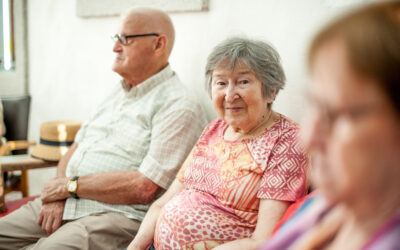 Subscribers Only
People
Subscribers Only
People 
Few pieces of Welsh legislation have dealt with matters as personal as what happens to someone’s organs after they die. In two year’s time, as the result of the Human Transplantation Act, people’s consent for their organs to be used after they die will be presumed unless they opt out. Sense Cymru became involved with the Bill during the development stage to ensure deafblind people were included on the list of ‘hard to reach’ groups in the Bill’s Explanatory Memorandum. The list will be used during the design and implementation of the Welsh Government’s communication plan.
If communication about the changes is done properly it will mean deafblind people can fully participate in the new system by taking informed decisions about their organs.
There is also a legal imperative to get communication right. As a Welsh Government official told the Assembly’s Health Committee:
“We recognise that consent can only be lawful if people have full knowledge of the system, and full knowledge of what they are actually consenting to by doing nothing and taking no action.”
Both deaf and blind (and hard of hearing and partially sighted) people were on the draft ‘hard to reach’ list. People might wonder why a specific reference to deafblind people was necessary in the communication plan outline. The answer lies in the nature of deafblindness. Sense sometimes uses ‘dual sensory loss’ to refer to deafblindness because many deafblind people have residual sight and hearing that they use. The impact of deafblindness comes from a person’s two sensory losses combining and multiplying the effect of each other. As a result deafblind people often face difficulties in mobility, communication and access to information.
Public information campaigns can go wrong if they are poorly planned or implemented.
In one local authority area in England, Sense became aware of problems with new food waste bins and a low level of uptake by deafblind people. Several weeks after they were delivered, an interpreter asked a deafblind person what they thought of the bins. The deafblind person had no idea what the interpreter was talking about. The interpreter spoke to other deafblind people in the area and found a similar lack of awareness. The local authority had undertaken a public information campaign through local media, leaflets and written instructions accompanying the food bins. All of these were evidently not accessible to deafblind people in the area who were not aware the bins were there, so had not taken them from the front of their houses and flats. The bins then vanished and it is unclear whether the council reclaimed them or other people took them away. To compound the error, the council then asked the deafblind people to pay for delivery of new bins.
Deafblind people’s communication needs and access to information in particular mean the Welsh Government will have to pay specific attention to communicating with deafblind people.
Listing deafblind people in the Explanatory Memorandum is an encouraging start that shows awareness of the audience the Welsh Government needs to reach. However, while labels have a use the communication plan should deal with deafblind people in terms of the communication methods and formats needed to reach them rather than the ‘deafblind’ label.
The ‘deafblind’ category covers a wide range of people, including those born with deafblindness and those who have acquired it later on in life. Some deafblind people use speech, others use tactile methods of communication, British Sign Language or other methods. Some may be able to read large print materials while others may rely on clear speech or other communication techniques. Academic estimates suggest there are around 19,000 people with dual sensory loss in Wales. Deafblind people can be isolated, with restricted access to mainstream media or narrow social circles. Some deafblind people will only be reached if they are identified and approached specifically with information in a format or method they find accessible, e.g. deafblind manual finger-spelling.
General public health information about the changes should be designed accessibly to ensure maximum reach.
For example, many deaf, hard of hearing or deafblind people use British Sign Language as their first language and might not easily understand English language word play or idioms used on posters. Straightforward and clear information will also be more accessible to hearing and sighted people too. These measures could be supported by targeted approaches to people at local deaf clubs or hospital audiology departments. Another consideration is the accessibility of registering wishes. This could include, ensuring the relevant websites are accessibility tested to ensure blind, deafblind or partially sighted people using screen-readers can access information and registration of wishes pages easily. Again, clear and accessible website design will help everybody, not just deafblind people.
Sense Cymru has already been in touch with the Welsh Government team implementing the Act. All the initial signs are positive: deafblind people are identified as a hard to reach group and the Welsh Government team is willing to work with charities and expert organisations to ensure the communication plan reaches everyone. This bodes well and will hopefully lead to more deafblind people being able to engage with the new system by giving – or not giving – their organs as the result of an informed choice.
Nick Morris is Policy & Campaigns Officer for Sense Cymru and RNIB Cymru


